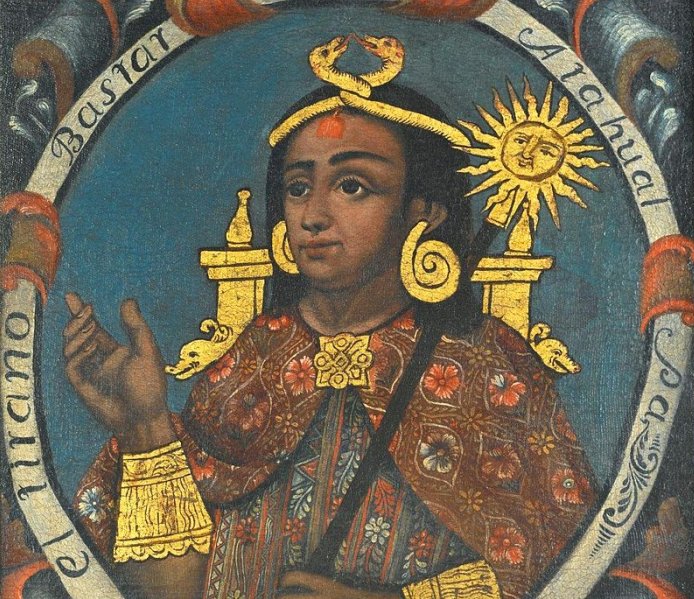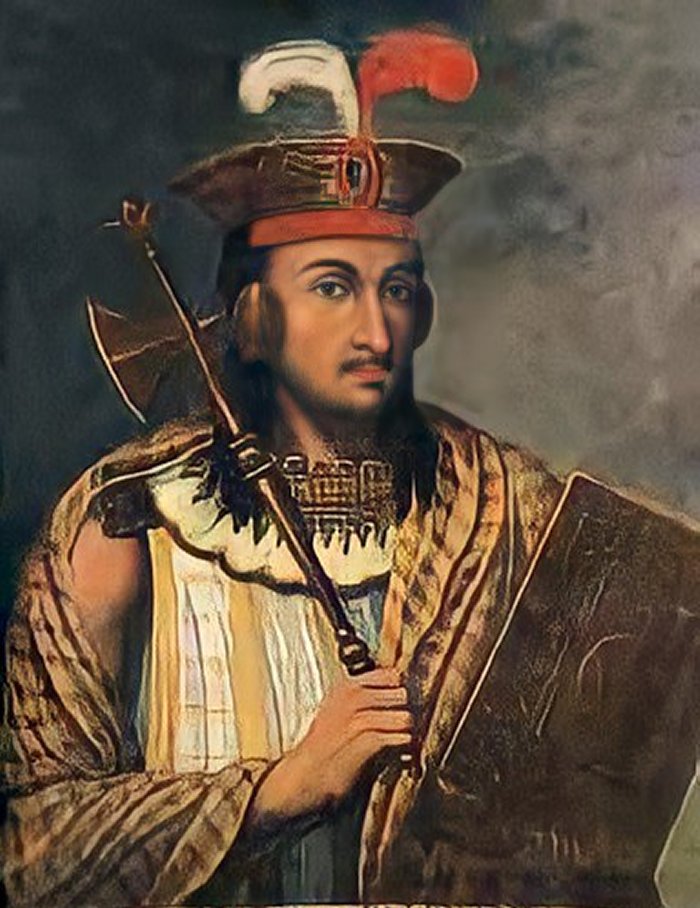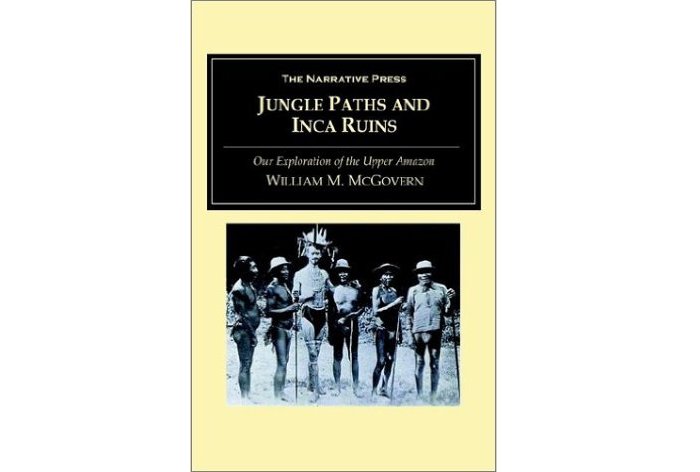Ellen Lloyd – AncientPages.com – There are many stories of incredible ancient treasures that were deliberately hidden when the Spaniards conquered the Incas. One of these remarkable and precious treasures is the Golden Chain of Huayna Capac.

Atahualpa, Fourteenth Inca. 18th-century painting by the Cusco School, (Brooklyn Museum). Image credit: Brooklyn Museum – Public Domain
Treasure hunters have been searching for the fantastic chain since the 16th century, but no one has ever been able to locate it. Where is it hidden? Does it exist, or is it just a myth?
Spaniards’ Quest For Hidden Ancient Inca Gold Treasures
Deep inside the unforgiving Llanganates mountain range between the Andes and the Amazon is said to be a fabulous Inca hoard hidden from Spanish conquistadors.
The legend began in the 16th century when the great Inca Empire in western South America was giving way to European invaders. The Spaniards’ conquest of the Incas was made more accessible because the ancient civilization was in the middle of a civil war. A smallpox epidemic later followed that.
When the famous and powerful Inca ruler Huayna Capac died of smallpox, the Inca Empire became divided, and its people were confused. Huascar and Atahualpa, the sons of Huayna Capac, were rivals and fought each other to gain control of their father’s empire.
As if things were not bad enough, many Incas started to believe the Spanish conquistador Francisco Pizarro and his soldiers were the creator god Viracocha and his demi-gods who had returned from the afterlife to claim the Inca realm.
All those factors made the Spaniards’ conquest of the Inca Empire relatively easy.
The Spaniards were very motivated by a quest for gold. They had heard the Incas owned enormous and priceless gold treasures. Pizarro and his men were determined to get their hands on the valuable Inca objects.

Imaginary portrait of the Inca Huayna Cápac. Image credit: FUEJXJDK – CC BY-SA 4.0
When Atahualpa was captured and killed by the Spaniards, the Incas hid their gold treasures in caves, lakes, and other difficult-to-access places.
A Gold Chain So Thick And Heavy That 200 Men Had To Carry It
Legends tell that among these treasures was the incredible 800-foot-long golden chain of Huayna Capac. The chain was said to be so heavy that it took 200 people to carry it.
In Royal Commentaries of the Inca, written by Inca Garcilaso de la Vega (1539-1616), there is a chain description. Vega confessed he had never seen the chain, but he was told about it by his mother’s Inca uncle. According to Vega, the very thick chain was made of pure gold. It was created on orders from Huayna Capac to celebrate the naming ceremony of his son Huascar.
Vega states that the golden chain was used in a dance of the ceremony. Up to 300 Indians arrayed themselves in the plaza before the reigning Inca. Each and one of them held the hand of the man next to him. In this way, they formed a chain before the ruler. Then they started to dance slowly, taking one step backward and two forwards.
Does The Golden Chain Of Huayna Capac Exist?
It has been debated for many years whether the golden chain of Huayna Capac exists.
For example, John Howland Rowe, Professor Emeritus and expert in Peruvian archaeology University of California at Berkeley, stated that such an artifact was unlikely. In his opinion, this ritual artifact could have been a fiber rope adorned with gold plaques or other decorations, especially since, according to Vega, the Inca’s Quechua language lacked an exact term for the word “chain.” Thus Huascar’s name meant “rope.”

In 1925, anthropologist William McGovern was attempting to lead a routine life in London when a friend asked him to journey up the Amazon and on to Inca Ruins in Brazil. The friend withdrew, and McGovern found himself on his way to Brazil accompanied by only a cameraman. Read more
We do not know whether the mysterious ancient artifact was a chain or a rope, we do not know, but what is certain is that treasure hunters have been looking for it more or less everywhere and still hope to find it.
Anthropologist Dr. Willaim McGovern writes in his book Jungle Paths and Inca Ruins about secret caverns that were said to contain altars carved of the rock to honor the Gods of the Deep. According to McGovern, the end of the Chicana cavern is connected with the Temple of the Sun in Cuzco. This place might contain a large part of the golden treasures of the Inca Emperors. However, the cavern is vast and has not been fully explored.
Some believe the Golden Chain of Huayna Capac is resting at the bottom of a lake.
In Royal Commentaries, Vega writes about a lake many Peruvians believe to be Lake Urcos, near Cuzco. The problem is the measurements are wrong. Vega’s lake is about 1.3 miles in circumference, bottomless, surrounded by mountains, and located approximately 15.6 miles south of the Inca capital. However, Lake Urcos is 29 miles south of Cuzco. So, either Vega made a mistake or was referring to another lake.
The quest for the Golden Chain of Huayna Capac continues, and whether this precious ancient Inca artifact will be found one day remains to be seen.
Written by – Ellen Lloyd – AncientPages.com
Updated on December 17, 2022
Copyright © AncientPages.com All rights reserved. This material may not be published, broadcast, rewritten or redistributed in whole or part without the express written permission of AncientPages.com
Expand for references
References:
de Gamboa, Pedro Sarmiento. History of the Incas
McGovern W. M. Jungle Paths and Inca Ruins





